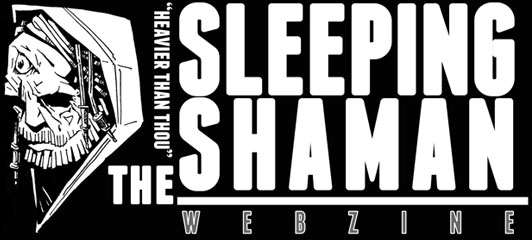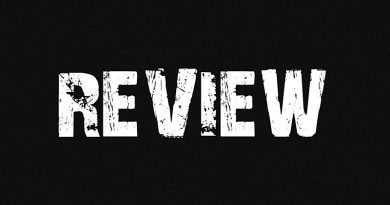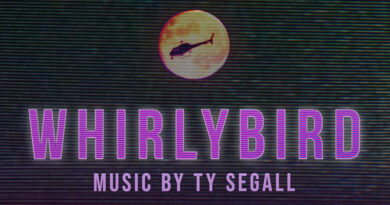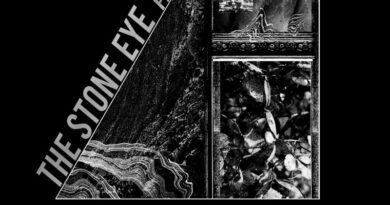Review: Ulver ‘Flowers Of Evil’
I have a problem with Ulver. I simply cannot get enough of them. This may, at first glance, seem like a problem for a reviewer. And it is, albeit perhaps not for the most obvious reason. Every time a new Ulver record is announced I immediately grab it and then get this nervous, nail-biting worry that maybe this one won’t be any good. Maybe this one will be too much of a stylistic change. Maybe this one will let me down. Maybe I simply won’t like this one. Maybe it will be my fault, not theirs.
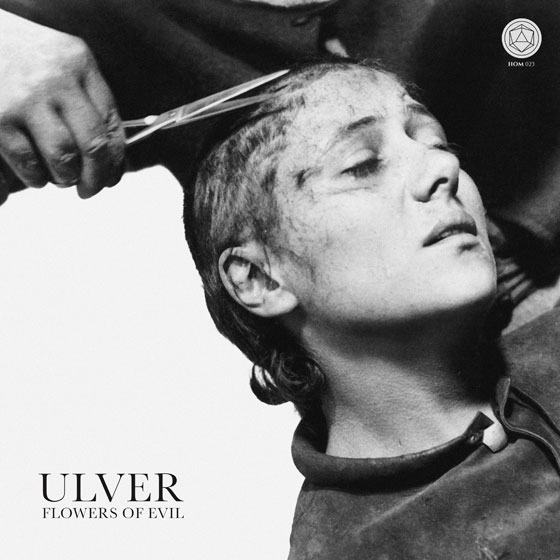
Flowers Of Evil is actually less of a break with previous album The Assassination Of Julius Caesar than we might expect from a band almost defined by their mutable indefinability. The same wolfish, loping groove remains, as does the same melancholy feel of 80s art-pop like Talk Talk or Japan. Even the same lyrical concerns remain, subtly laced through the album’s eight tracks.
What is different, though, is a much more sparse arrangement when compared to the more decadent Assassination. Rather than the bombastic drums of Nemoralia, Flowers Of Evil opens with the shivering, muted synths of One Last Dance, where Kristoffer Rygg assures us that ‘we are wolves under the moon / this is our song / we have loved and we have lost / we’re ready to go’. This slow yet determined track sets the scene for album; of a street-gang on the back foot, perhaps, yet bloodied and unbowed and ready for the final showdown. In a way, despite the record’s obvious 80s and 90s influences, this immediately makes Flowers Of Evil a very 2020 album.
Strangely, Russian Doll – the album’s first single and second track – follows by immediately recycling what sounds like a slightly slowed-down version of One Last Dance’s rhythm section and loses some power because of it. It’s not a bad track but it is, for Ulver, quite an average piece of music even if the Christiane F-esque lyrical theme of loss and abandonment – a theme that persists through the track’s video as a solo dancer, clad in Bergtatt shirt and Coil logo leather jacket, gyrates through a seemingly abandoned housing estate – is powerful.
Thankfully, we quickly move to the album’s core; the powerhouse of Machine Guns And Peacock Feathers, Hour Of The Wolf, Apocalypse 1993 and Little Boy. The swagger of Machine Guns And Peacock Feather almost reaches Saturday Night Fever levels of strut with stabbing guitar and chattering synthesisers backing a call-and-response vocal line from Rygg and a soulful female chorus.
Hour Of The Wolf is one of the best pieces of music they’ve released in the band’s near-thirty year career…
Then 70s disco moves into 80s horror film as an off-kilter warble of keys that John Carpenter would be proud of leads us into the Hour Of The Wolf, the album’s stand-out track. The promo notes explain that this title is sourced from Ingmar Bergman’s film of the same name – a delirious masterpiece of lycanthropic dream imagery whose original Swedish title, Vargtimmen, can’t help but remind long term Ulver fans of the band’s Vargnatt debut demo – and the film’s woozy, sinister vibe pervades throughout. Hour Of The Wolf is a quite beautiful piece of slow-burn pop-noir that reeks of the very best, most austere tracks that Ultravox ever wrote.
The more upbeat, yet still heavily synth-led Apocalypse 1993 – referring to the events of that year in Waco, Texas, when the US Federal Government besieged and eventually stormed the Branch Davidian compound of David Koresh and his followers – provides a sister-track to Assassination’s 1969. Both tracks are concerned with apocalypse and its prediction, and both are concerned with how that apocalypse is centered on specific locations; the Waco compound and the 10050 Cielo Drive home of Sharon Tate, where she was murdered by the Manson Family. The apocalypse comes to a head with Little Boy, in which a dizzying blend of lyrical themes – fascism, total war, the ‘flowers of evil’ that blossom from nuclear detonations – are driven along by a near-motorik groove that creates a sense of grim, hysterical inevitability before collapsing into radio-frequency drones and silence.
After this, the jaunty, jazzy piano of Nostalgia, and the maudlin millennial pop of A Thousand Cuts is almost a disappointment. Like Russian Doll, neither of these are bad tracks but they feel like rehashes of stereotypes rather than Ulver’s more usual reworkings of tropes. A Thousand Cuts even harks back to Perdition City’s neon-lit, urban sprawl before reworking the ghost of 2002’s Lyckantropen Theme’s core melody into its DNA. This at least adds a slight frisson of remembrance to the track, something which Nostalgia, ironically, fails to do.
If Flowers Of Evil were an EP consisting of the four tracks at its core – or perhaps even if the running order were slightly different – then this would be yet another breathtaking release from Ulver. As it stands, it’s merely very good. Hour Of The Wolf is one of the best pieces of music they’ve released in the band’s near-thirty year career and Kristoffer Rygg’s vocals are, as ever, buttermilk rich and soaring, but some of the more upbeat musical moments veer too close to Level 42’s pristine take on funk rather than the sweat of James Brown.
Yes, Flowers Of Evil is a good Ulver record but it’s far from my favourite Ulver record and is that my fault or theirs?
Label: House Of Mythology
Band Links: Official | Facebook | Bandcamp | Twitter | Instagram
Scribed by: Daniel Pietersen
